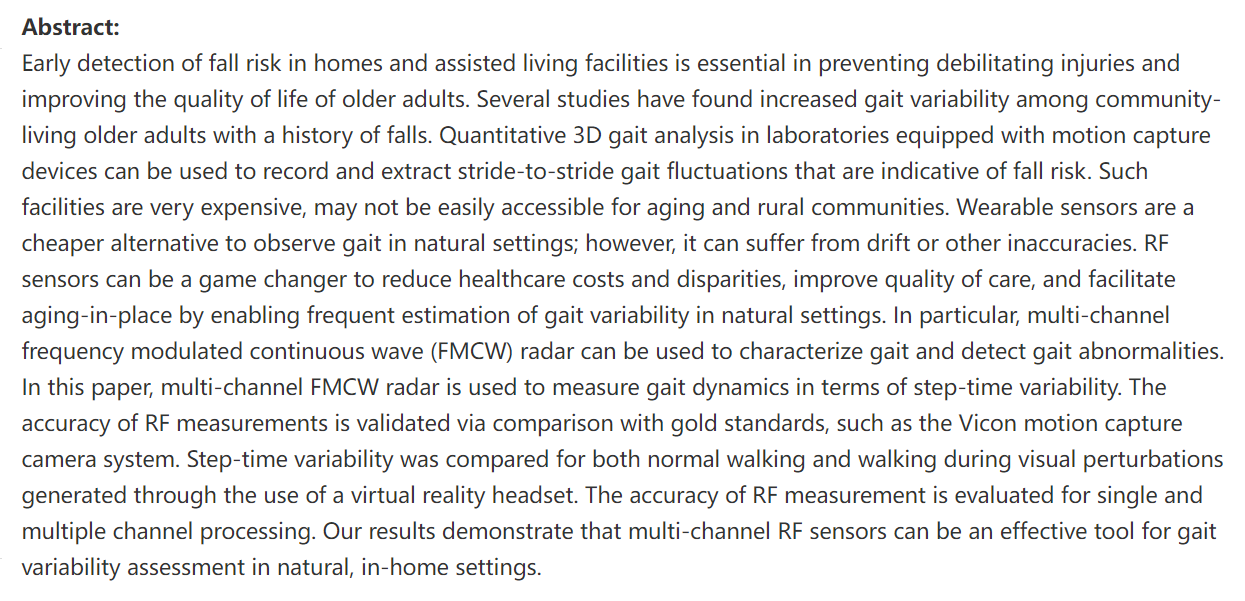Gait Variability Analysis with Multi-Channel FMCW Radar for Fall Risk Assessment
PubDate: July 2022
Teams: The University of Alabama
Writers: M. Mahbubur Rahman; Dario Martelli; Sevgi Z. Gurbuz
PDF: Gait Variability Analysis with Multi-Channel FMCW Radar for Fall Risk Assessment

Abstract
Early detection of fall risk in homes and assisted living facilities is essential in preventing debilitating injuries and improving the quality of life of older adults. Several studies have found increased gait variability among community-living older adults with a history of falls. Quantitative 3D gait analysis in laboratories equipped with motion capture devices can be used to record and extract stride-to-stride gait fluctuations that are indicative of fall risk. Such facilities are very expensive, may not be easily accessible for aging and rural communities. Wearable sensors are a cheaper alternative to observe gait in natural settings; however, it can suffer from drift or other inaccuracies. RF sensors can be a game changer to reduce healthcare costs and disparities, improve quality of care, and facilitate aging-in-place by enabling frequent estimation of gait variability in natural settings. In particular, multi-channel frequency modulated continuous wave (FMCW) radar can be used to characterize gait and detect gait abnormalities. In this paper, multi-channel FMCW radar is used to measure gait dynamics in terms of step-time variability. The accuracy of RF measurements is validated via comparison with gold standards, such as the Vicon motion capture camera system. Step-time variability was compared for both normal walking and walking during visual perturbations generated through the use of a virtual reality headset. The accuracy of RF measurement is evaluated for single and multiple channel processing. Our results demonstrate that multi-channel RF sensors can be an effective tool for gait variability assessment in natural, in-home settings.


